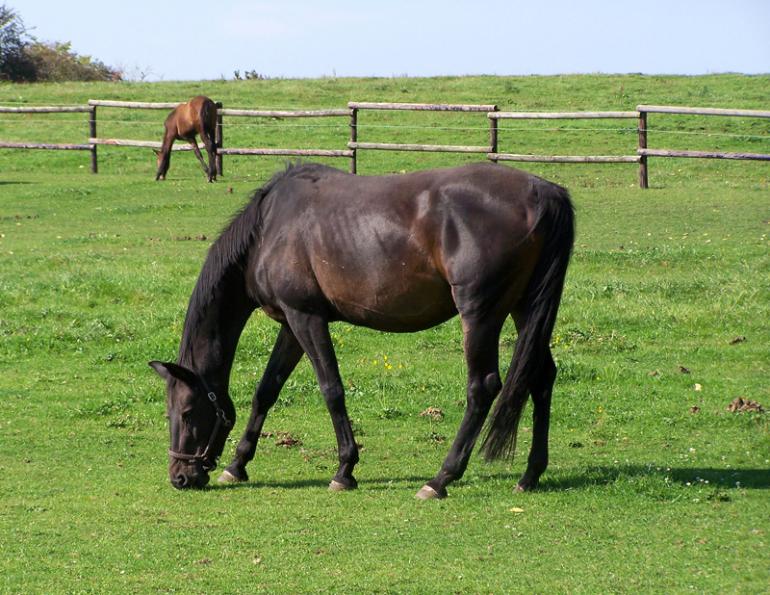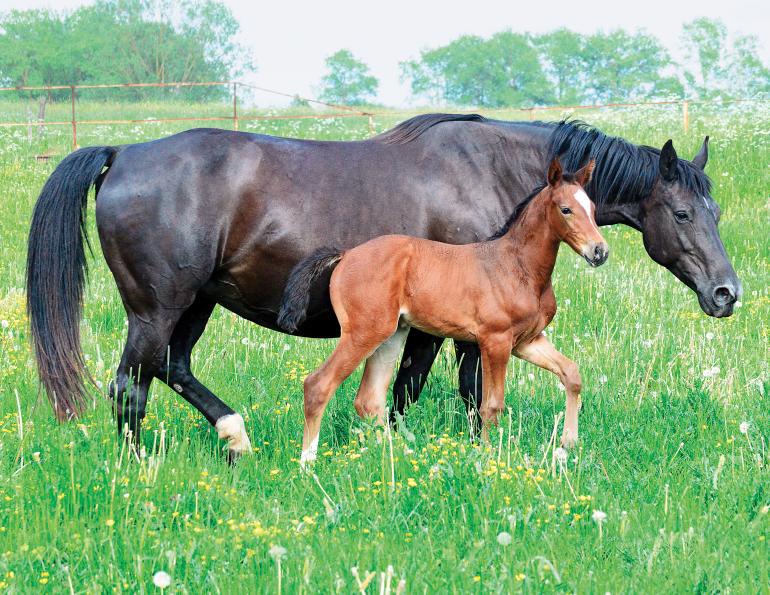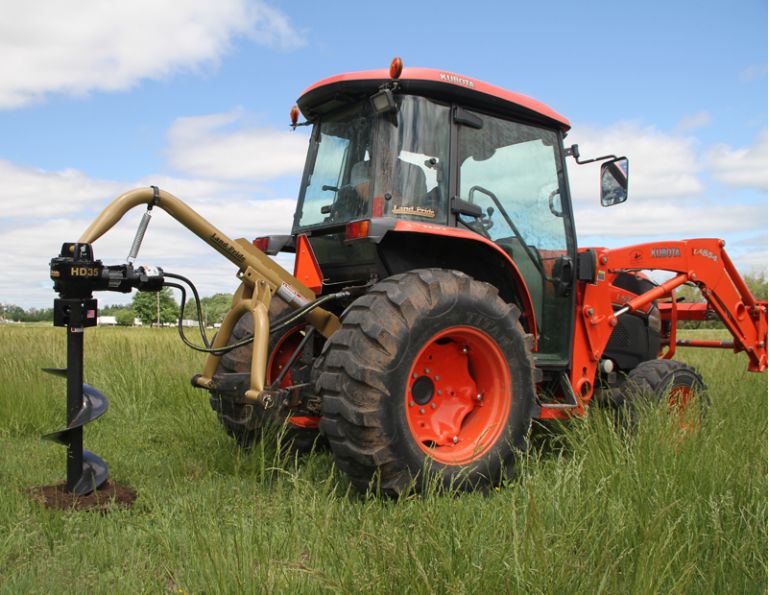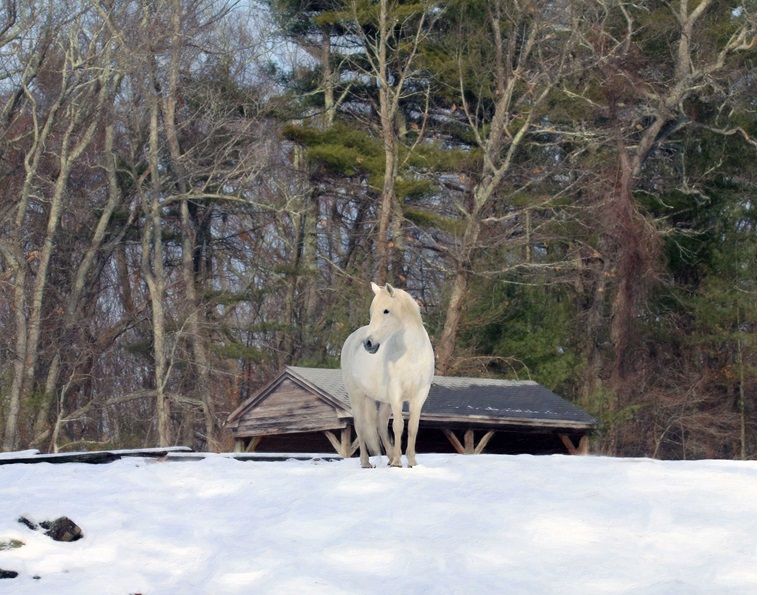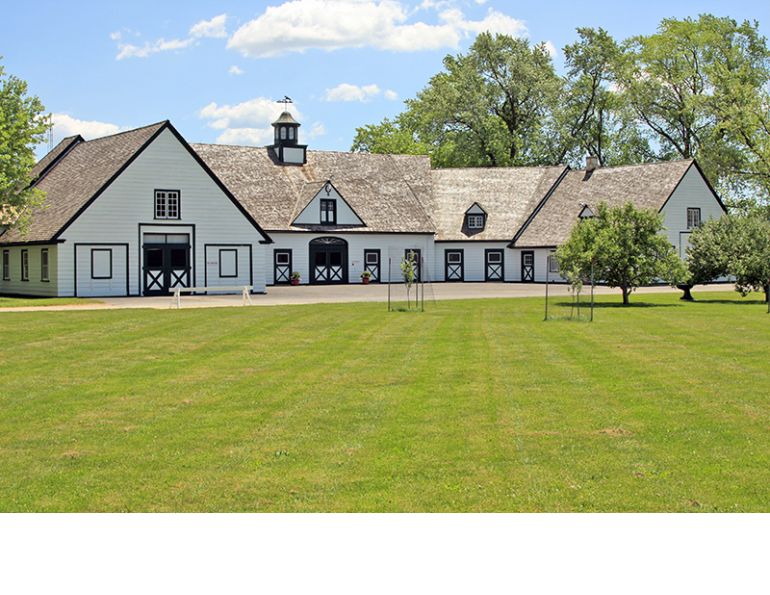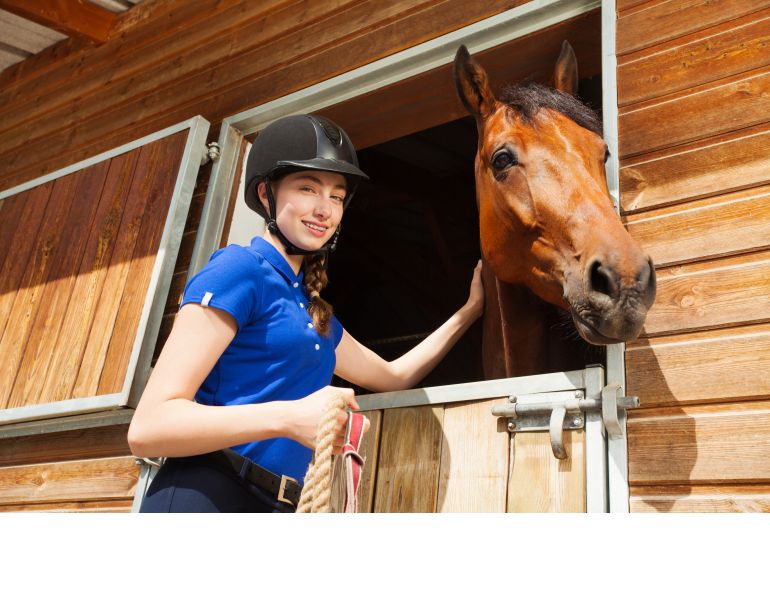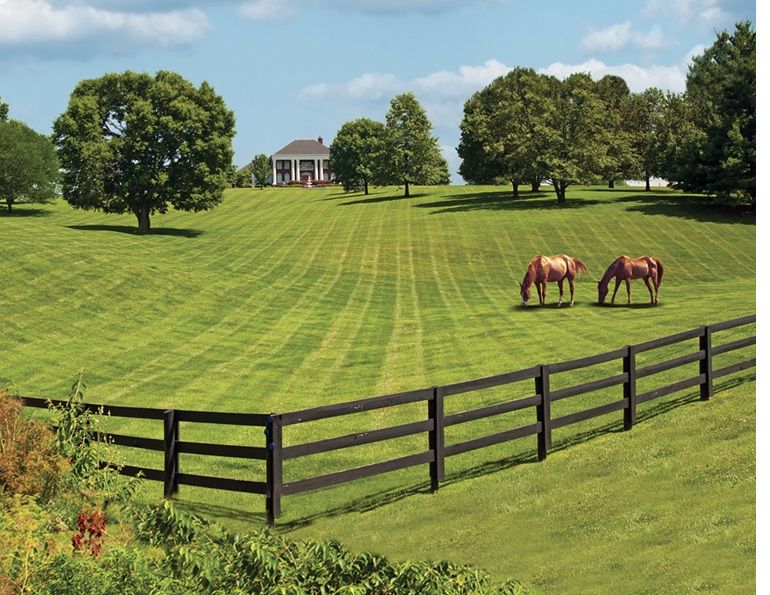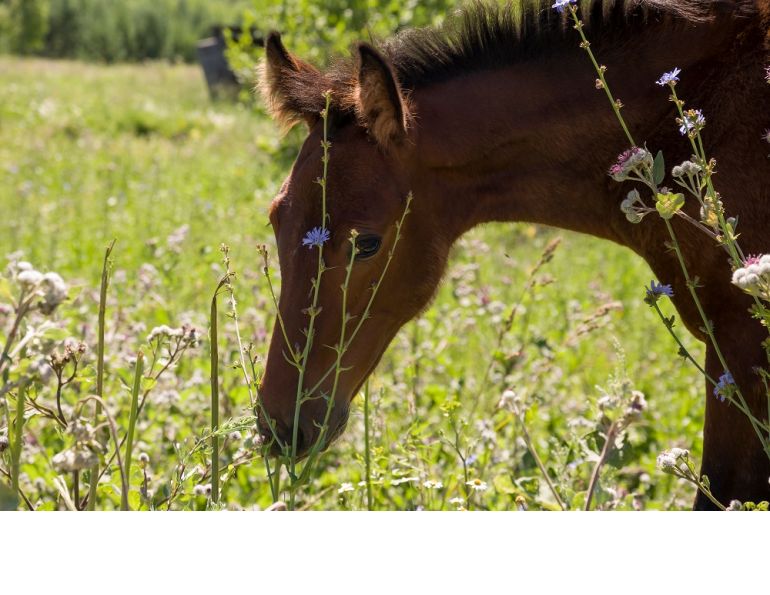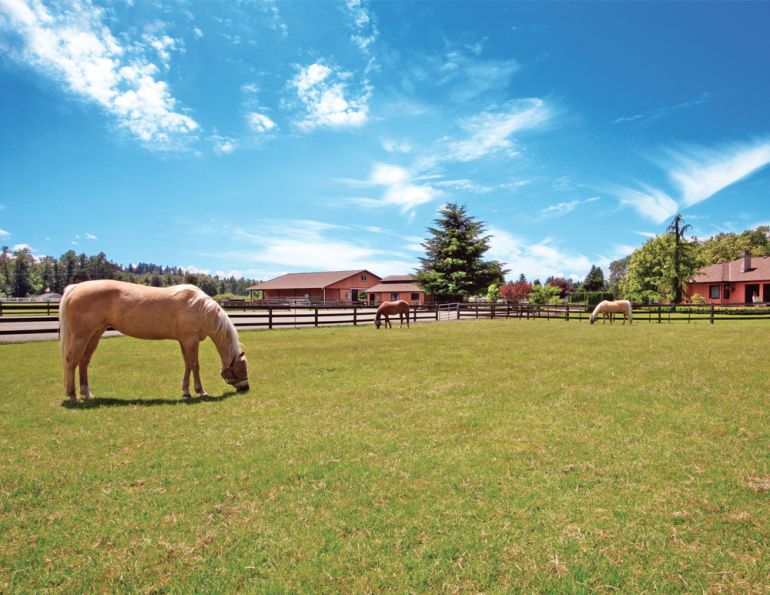By Kathy Smith
With the summer sunshine on its way, it’s time for horse property owners to get outside and look for ways to maintain and improve their farms and pastures. The time and effort invested now will help keep your property looking its best and your horses safe, and preserve your beloved country way of life.
1. Identify and understand what is growing in your pastures and learn how grazing affects the pasture to help you make sound pasture management decisions.
2. Allow horses to graze uniformly and completely, but never below five centimetres.
3. Practice rotational grazing, which gives pasture time to rest and manure time to break down.
4. Allow grass to recover until growth is at least 10 centimetres (approximately 20 to 30 days).
5. Create a sacrifice area to keep horses off pasture when necessary (e.g. after rain).
6. Allow soil to dry before grazing begins again.
7. When horses are spot grazing and weeds are growing seed heads, mow to control the mature under-grazed forage and the weeds. Mow and harrow immediately after grazing if possible.
8. Learn to identify weeds and poisonous plants, and how to control them. Many produce attractive flowers and are not easily recognizable as invasive weeds.
9. Check for weeds regularly along fence lines, and at handling areas, watering and feeding sites, and any areas that have been over-grazed.
10. Reduce weed invasion by cutting or spraying fence line weeds. Horses should be removed from herbicide-treated pastures for the length of time recommended on the product label.
11. Detect and eradicate weeds before they become established. Weed infestations will decrease the productivity of your pasture and eradicating weeds can be expensive.
12. Harrow to spread manure, preferably in hot, dry weather; do not irrigate for two to three days.
13. Have your veterinarian perform regular fecal egg counts on your pastures, and establish a regular deworming program in consultation with your vet.
14. Reduce mosquitos and weeds by draining or levelling pasture areas where standing water accumulates.
15. Revive a tired pasture by using a suitable fertilization program after appropriate soil tests have been done.
16. Graze up to two weeks earlier in the spring by using proper fertilization. Your horses will love you for this!
17. When seeding your new pasture, select plant species based on your local climate and soil, your style of pasture management, and the amount of forage you need over the grazing season.
18. For high traffic areas, such as around water and feed troughs, select plants that will handle wear and tear by hooves, provide good ground cover, and minimize soil disturbance. Overuse in these areas results in compaction of the soil, and the resulting bare patches are subject to erosion and weeds.
19. Take samples of your pasture forage at different times of year and have them analysed. The quality and quantity of pasture can be greatly increased by proper fertilization.
20. During drought periods, give pastures longer rest periods, reduce the stocking rate, and be aware of poisonous weeds that horses may eat if forage is unavailable.
21. Treat the time you spend learning proper pasture management as a good investment in your property and community. Over-grazed pastures are an eyesore and can cause erosion, water pollution, and unhappy neighbours. Overgrazing encourages the growth of weeds, many of which are toxic to horses.
22. Learn how to determine stocking rates for your pasture and how to calculate approximately how much pasture your horse is eating. Quality pasture can provide much of your horse’s nutritional needs, depending on plant types and their stage of maturity, the season, and the nutrients your horses require. Contact your provincial Department of Agriculture for information.
23. Consider all pasture improvement options before deciding on complete pasture renovation. A new pasture is costly and new growth takes one to three years to become well established. But if less than 25 percent of your pasture is desirable plants, a complete renovation may be the best option.
24. When undertaking a major pasture renovation, get knowledgeable advice, unless you have experience growing crops.
25. Provide your horses with shelter from the sun and inclement weather. A run-in shed will provide welcome shade and relief from rain and wind.
26. Mineral salt blocks should always be available to your horses.
27. Divert run-off around manure storage areas, corrals, riding rings, or other areas where manure accumulates. Install rain gutters and run-off systems on barns and covered arenas.
28. Divert water from corrals and confinement areas with diversion berms, and create catch areas for contaminated run-off.
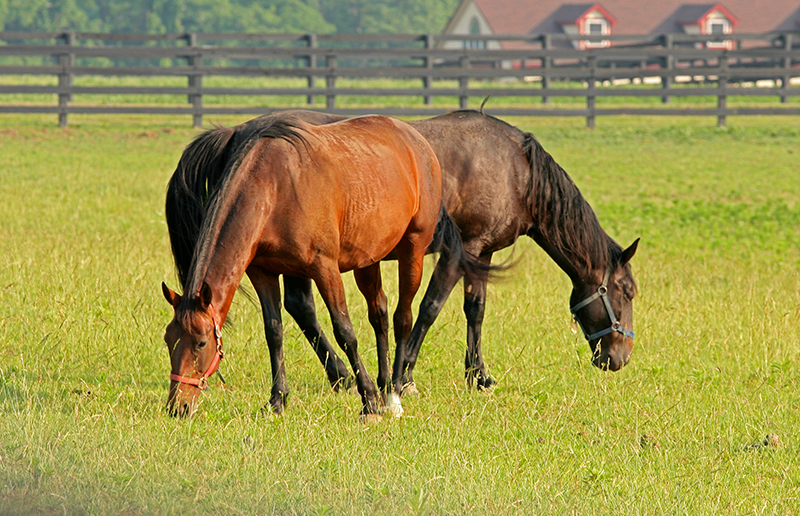
29. Protect riparian areas (land immediately surrounding waterways and other surface water) on your property by fencing them off and using alternative watering sources. If you do allow horses to graze riparian areas, turn them out for short periods or make the areas part of your rotational grazing program. Do not allow riparian areas to be grazed in the spring when water levels are high.
30. Provide your horses with a clean, reliable water source.
31. Water troughs should be checked for leaks and general wear and tear, and cleaned when necessary. The plumbing system, valves, screens, and floats should be thoroughly checked.
32. If you have added horses to your pasture, make sure the water trough and water supply are still sufficient to handle the capacity.
33. Site your new water trough in a well-drained area. If the trough is to be permanent, consider siting it on a hard base such as gravel.
34. Lightweight troughs should be anchored to prevent movement by animals. Troughs large enough that animals could enter them should be partially fenced off.
35. During operating season, check your water trough regularly for leaks, proper operation, and undesirable material such as dead animals or birds.
36. Review your manure management practices yearly. Poor manure management can result in ground and surface water contamination, odours, flies, and more of those unhappy neighbours. If you can identify areas for improvement, put them on your “to do” list for this summer.
37. Cover your manure pile and control run-off. Check local regulations regarding distance between watercourses and manure storage areas, and relocate your manure pile if necessary
38. Tempted to fill in low areas and swales on your property with manure and soiled bedding? Don’t do it! Use proper fill, properly levelled.
39. Situate your manure pile at least 20 feet away from the barn to reduce the chance of combustion.
40. Spread composted horse manure on pastures during the growing season to improve soil texture and provide some fertilizer value. Do not spread raw, uncomposted manure on the pasture; this increases the risk of spreading parasites and contaminating the pasture with weed seeds.
41. Consider composting as an excellent manure handling option.
42. Periodically walk the fence line to check for fallen trees, broken boards, loose or tangled wire, and other problems, and repair or replace as needed.
43. Thoroughly inspect all fencing, including posts, gates, braces, and insulators. Maintenance adds years of life to your fence and keeps your horses safer.
44. If horses are pressuring or chewing fences, consider running one electric wire to keep them off the fence.
45. Critically assess your fencing plan. Do your gates and fencing configuration allow for easy access and movement? Do corners need to be rounded? Do you need to isolate difficult horses? Is your fence visible enough? Summer is the time to make these improvements before the ground freezes and the snow flies again.
46. Walk your pastures looking for anything that has been tossed in by the wind or careless human hands.
47. Banish clutter by hauling away any garbage and junk that has accumulated.
48. Keep grass mowed around farm buildings to reduce the fire risk that tall, dry grass presents.
49. Make sure your property is accessible. Your farm name should be prominently displayed at the farm’s entrance and directions to your farm should be posted beside the telephone so emergency responders can be given clear instructions.
50. Recap. Think back over the past year and identify the problems that occurred during each season so you can take steps to prevent them in the future. Prevention and planning are the keys to a successful farm maintenance program.



